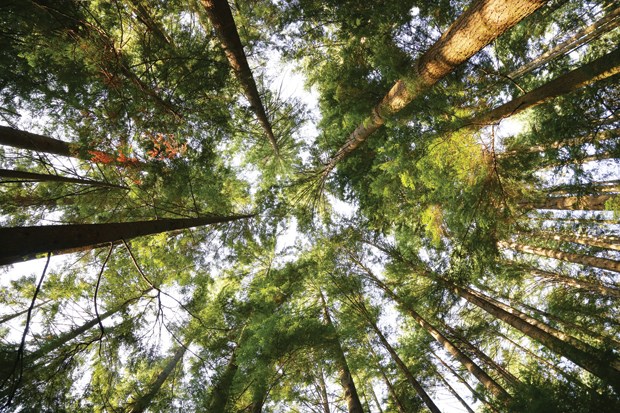According to the Canadian Forestry Association (CFA), Sept. 21-27 is National Forest Week.
Originally named Forest Fire Prevention Week in 1920, the concept was developed to raise awareness about the impact of humancaused forest fires on the Canadian economy and society.
In 1967 the event was renamed National Forest Week by the CFA, "to encompass the many and varied human and environmental aspects of Canada's forest resources - past, present and future," according to its website, canadianforestry.com.
On March 2, 2011, Canada's House of Commons approved a private members motion by MP Royal Galipeau to declare the Wednesday of National Forest Week to be National Tree Day. This year, National Tree Day will take place on Sept. 24. One of the primary events for the association this year will be the 11th Canadian Urban Forest Conference in Victoria from Sept. 30 to Oct. 2. The CFA promotes those events to, "encourage Canadians to learn more about Canada's forest heritage and to raise awareness about this valuable and renewable resource. Forests are fundamental to our economy, culture, traditions and history - and to our future. Communities, families and individuals depend on forests for their livelihood and way of life," according to its website.
National Tree Day is promoted through Tree Canada (treecanada. ca) with several events planned across the country. Tree Canada finds financial support through more than 50 different corporations and individuals. Tree Canada has planted more than 80 million trees and greened 550 schoolyards across Canada since its inception. That's quite an accomplishment for a group that does not publicize itself very well.
Among the most noteworthy of corporate sponsors of National Tree Day is the TD Friends of the Environment Foundation (fef.td.com). I have spoken of the TD Friends before in this column, and I do not work for the bank. However, consider this fact: Since 1990, TD Friends of the Environment Foundation has provided $60 million in funding to more than 20,000 community-based environmental projects in Canada.
Worthy work like that needs recognition. Yes, I know there are other worthy community partners but they do not put their money where their ideology is, not nearly as well as the TD Friends do. Besides consistently funding green projects since the 1990s, TD covers the administrative cost of their foundation, which they claim, "allows 100 per cent of the money raised to go directly to programs."
In the past 10 years I have spoken many times of the benefits that trees provide to people.
The benefits are real, scientifically proven and financially valued but not widely understood. For example when it rains, trees, especially conifers like cedar, hemlock and fir, absorb and slow down the rainfall's percolation into the soil and municipal storm sewer systems. This ongoing benefit has been poorly misunderstood for many years by homeowners and municipal engineers. Slowly things are changing though and street tree planting, streamside or riparian area planting and highway roadside planting of trees has become common to take advantage of such benefits. Not to mention the many other climate maintenance and beautification benefits that trees afford.
Another interesting advantage to growing trees is the beauty benefit that improves with age. My smartphone lasted two and a half years before dying. The tree I planted in my front yard to block one particular view of the park across the street, was planted in 1994 and its beauty benefit has significantly improved while providing privacy. And all I had to do was water each year during summer drought. The tree, or "she" as I call our Japanese cedar (Cryptomeria japonica), was planted at three feet tall from a cutting. The tree is now 10 feet taller than the roof peak on my house. She is stunning to look at all year and her exotic foliage makes a noteworthy specimen in my neighbourhood. I see people from time to time stop in front of our house to touch her foliage that hangs just out to the road edge. The looks on their faces when they touch the spiking foliage is another beauty benefit that I reap. I have never pruned much except an occasional branch. She has no pest or disease problems and produces cool little cones to use for decoration. We love her so much we planted another tree, Cryptomeria japonica, Sekkan Sugi, right next to her so she would not be lonely. Together the cedar sisters adorn our property and the neighbourhood.
Animals live in both trees from time to time, bees make occasional nests and birds sing me awake on summer mornings from their perches up high in the sisters. It is hard to put a monetary value on all of those beauty benefits and I don't care to, it is a matter of good karma.
Todd Major is a journeyman horticulturist, garden designer and builder, teacher and organic advocate. [email protected]



